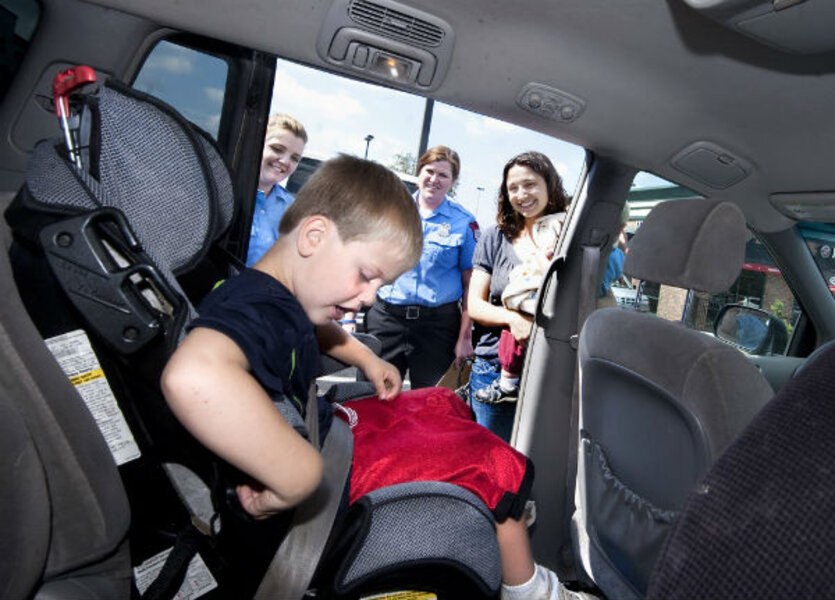Booster seat ratings: What parents should know
Loading...
| Detroit
More than half of child booster seats that went on sale this year earned a top rating from the Insurance Institute for Highway Safety.
The institute, which is funded by insurers, ranked 31 new models. Nineteen earned the top rating of "best bet," which means they correctly position a 4- to 8-year-old child to use the regular shoulder and lap belts in almost any car.
Britax, Evenflo, Ferrari, Graco, Harmony, Recaro, and Safety 1st all had seats on the institute's "best bet" list. Both booster seats with high backs and those without backs performed well.
One seat – the Ferrari Beline SP – got a "good bet" rating when used in its high-back mode. That means the fit is acceptable in most vehicles. Eleven seats got a "check fit" rating, which means the seats may provide a good fit in some vehicles but parents should make sure.
A belt fits correctly when the lap portion lies flat across the child's upper thighs and the shoulder portion crosses snugly over the middle of the shoulder. The institute said children in booster seats are much less likely to be injured in a crash than those without boosters. Children should use boosters until they're big enough for adult belts to fit properly.
The cheapest "best bet" was the Graco Connext backless seat, which costs $18. The most expensive, the Ferrari Beline SP, which has both high-back and backless modes, is $300.
The institute said seats have made big improvements since it began testing them five years ago. In all, there are 58 seats ranked on its website, including seats that weren't new in 2013. The group tested the boosters based on how they positioned a child-sized test dummy to use a car's seat belts.
There are only two booster seats the institute warns people not to buy: The Safety 1st All-In-One and Safety 1st Alpha Omega Elite. Both are made by Dorel Juvenile Group, which has several other seats on the "best bet" list.
The institute said the seats – which can be used in rear-facing mode for infants as well as forward-facing mode for young children – aren't recommended because the lap belt comes up too far on the abdomen and the shoulder belt is too far out on the shoulder.
Dorel Juvenile Group said in a statement that the seats comply with all federal safety requirements and are recommended by the institute in some of their other modes.







